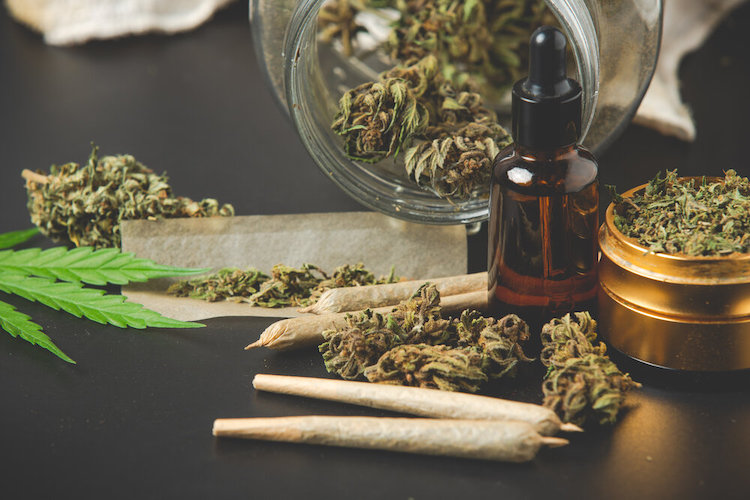The legalization of cannabis cultivation in the United States marks a significant shift in agricultural practices and plant variety offerings. This has not only transformed the landscape of legal cannabis farming but also influenced consumer choices and market dynamics. In this exploration, we delve into the evolving world of cannabis cultivation, examining both the innovative cultivation methods and the diverse range of cannabis seeds strains that are flourishing under this new legal framework.
The surge in the legal cultivation of cannabis has been accompanied by a rise in public interest and scientific research. This growth in knowledge and acceptance is leading to more informed decisions about cultivation methods and plant choices, ensuring that the industry evolves in a way that is both sustainable and responsive to consumer needs.
Advanced Cultivation Techniques
Indoor Cultivation
Indoor cultivation has become increasingly sophisticated, with growers adopting cutting-edge technologies to maximize yield and potency. This method allows for year-round cultivation, independent of external weather conditions. Techniques like vertical farming and aeroponics are pushing the boundaries of efficiency, allowing growers to produce more in limited spaces.
However, the high energy consumption and environmental footprint of indoor cultivation raise concerns. Innovations are being made in energy-efficient lighting and climate control systems to mitigate these impacts, making indoor cultivation more sustainable.
Outdoor Cultivation
Outdoor cultivation benefits from natural elements, allowing cannabis plants to grow in their most natural state. This method is often preferred for its minimal environmental impact and lower production costs. Outdoor farms can produce large quantities of cannabis, capitalizing on the natural growth cycles of the plants.
On the downside, outdoor cultivation is at the mercy of environmental conditions and climate changes, which can be unpredictable. This leads to variability in harvest quality and quantity, posing a challenge for consistent production.
Greenhouse Cultivation
Greenhouses offer the best of both worlds, combining natural sunlight with controlled environmental conditions. This hybrid approach is gaining popularity for its ability to produce high-quality cannabis with a smaller environmental footprint than traditional indoor cultivation.
Innovations in greenhouse technology, such as automated light-deprivation systems and climate control, are enhancing the efficiency of this cultivation method. These advancements allow for more precise control over the growing environment, leading to improved quality and yield consistency.
Legal Varieties of Cannabis Plants
Sativa Strains
Sativa strains, with their distinct uplifting and energizing effects, are highly sought after in the legal market. Cultivators are experimenting with various Sativa strains to cater to a market that values creativity and daytime use. These strains are particularly popular for their unique flavor profiles and cerebral effects.
The challenge with cultivating Sativa strains, particularly in legal markets, lies in their longer flowering periods and larger space requirements. Growers are adapting by selecting Sativa strains that are more suited to their specific growing environments, whether indoor, outdoor, or in greenhouses.
Indica Strains
Indica strains are revered for their relaxing and sedative effects, making them a popular choice for evening use. The legal market has seen an increase in the cultivation of Indica strains for their therapeutic potential, especially for pain relief and sleep aid. These strains are also known for their shorter flowering cycles, making them appealing for faster production turnover.
With the legalization of cannabis cultivation, breeders are focusing on developing Indica strains with specific cannabinoid profiles to target different therapeutic needs. This has led to a wider variety of Indica strains in the legal market, each tailored for specific consumer preferences.
Hybrid Strains
Hybrid strains represent a growing segment in the legal cannabis market, offering a balance between the effects of Sativa and Indica. Breeders are creating hybrids to combine the desirable traits of both types, such as the cerebral high of Sativa with the physical relaxation of Indica. This has led to a proliferation of hybrid strains, each with a unique combination of effects, flavors, and aromas.
The cultivation of hybrid strains in the legal market is driven by consumer demand for personalized cannabis experiences. As understanding of the plant’s genetics deepens, cultivators are able to produce hybrids that cater to very specific consumer needs and preferences, whether for recreational or medicinal purposes.
Regulations on Cultivation and Plant Varieties
State-Specific Legislation
The United States sees a diverse array of cannabis cultivation laws, varying significantly from one state to another. Some states have stringent regulations regarding the THC content in cultivated strains, while others focus on limiting the number of plants that can be grown. These regulations often dictate not just how cannabis is cultivated, but also which strains can be legally grown.
Adherence to these state-specific regulations is crucial for cultivators to maintain their licenses and operate legally. This often requires significant investment in compliance infrastructure, such as tracking systems and security measures, to ensure that all cultivation activities are transparent and accountable.
Compliance and Quality Control
Quality control is paramount in the legal cannabis industry. Cultivators are required to undergo rigorous testing for potency and purity, ensuring that their products are safe and consistent. This includes testing for cannabinoids, terpenes, pesticides, and other contaminants.
Compliance extends beyond product testing to include environmental and safety standards. This encompasses waste management, water usage, and worker safety, ensuring that the cultivation of cannabis is responsible and sustainable. These stringent regulations help to build consumer trust and legitimize the industry.
Economic and Social Implications
Market Expansion
The legalization of cannabis has led to a significant expansion of the market. New cultivation methods and plant varieties have attracted a wide range of investors and entrepreneurs, leading to a burgeoning industry. This expansion is not only seen in the production and sale of cannabis but also in the ancillary businesses that support the industry, such as equipment suppliers, technology developers, and professional services.
The social implications of this market expansion are vast. The legal cannabis industry has created numerous jobs and has become a significant economic contributor in states where it is legal. This growth has also led to increased tax revenues, which are often allocated to social programs and community development.
Consumer Preferences
As the legal cannabis market matures, consumer preferences are becoming increasingly sophisticated. Consumers are now more knowledgeable about different strains and cultivation methods, leading to a demand for high-quality, specialized products. This has pushed cultivators to innovate and diversify their product offerings to meet these evolving needs.
The shift in consumer preferences is also influencing the social perception of cannabis. As consumers become more discerning, cannabis is being recognized as a legitimate product with various uses and benefits. This shift is contributing to the destigmatization of cannabis and its users.
Future Trends in Cultivation
Technological Advancements
The future of cannabis cultivation is closely tied to technological advancements. Innovations in LED lighting, automated systems, and genetic research are expected to drive the industry forward. These technologies will enable cultivators to produce higher quality cannabis more efficiently and sustainably.
As the industry continues to grow, there is also an increasing focus on environmentally friendly cultivation practices. This includes the use of renewable energy sources, water conservation techniques, and organic farming practices. These advancements not only improve the sustainability of cannabis cultivation but also appeal to environmentally conscious consumers.
Genetic Experimentation
The legal status of cannabis has opened the doors to extensive genetic experimentation and breeding programs. Scientists and cultivators are working together to explore the genetic makeup of the cannabis plant, leading to the development of new strains with specific characteristics. This could include strains with unique cannabinoid profiles, tailored for medical use, or strains that are more resistant to pests and diseases.
This genetic experimentation is not limited to THC-dominant strains. There is a growing interest in cultivating strains high in other cannabinoids, such as CBD, CBG, and CBN, which have their own unique effects and therapeutic benefits. This diversification of the cannabis plant’s genetics promises to broaden the scope of its applications and appeal to a wider audience.
FAQs
Q: What are the most common methods of cannabis cultivation in legal states? A: The most common methods include indoor, outdoor, and greenhouse cultivation, each with its own advantages and regulatory considerations. Innovations in these methods are continually evolving to enhance efficiency and sustainability.
Q: How do state laws vary regarding cannabis cultivation? A: State laws differ in terms of allowed cultivation methods, plant counts, strain types, and THC content, among other factors. Compliance with these laws is essential for legal cultivation and varies widely across different states.
Q: Can anyone grow cannabis in states where it’s legal? A: Not necessarily. Most states require licenses or permits, and there are often restrictions on who can grow cannabis and how much can be cultivated. Additionally, compliance with state-specific cultivation and safety standards is mandatory.
Q: Are there environmental concerns with cannabis cultivation? A: Yes, especially with indoor cultivation, which can have a high environmental impact due to energy use. Many growers are adopting more sustainable practices in response, such as using renewable energy sources and implementing water conservation techniques.
Q: How has legalization impacted the variety of cannabis strains available? A: Legalization has greatly increased the variety of available strains, with breeders and growers experimenting to create unique and high-quality products. This includes a focus on developing strains with specific cannabinoid profiles and tailored effects for both recreational and medicinal use.








